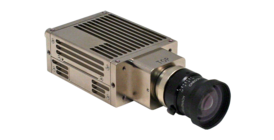
Réaltra Space Systems Engineering is an Irish company dedicated to the design, development, and manufacturing of cost-effective space electronic systems using cutting-edge technologies. Réaltra was awarded a contract to develop a launcher video telemetry system (LVTS) that will provide the onboard live video telemetry for a launcher that is anticipated to fly in 2021.
Réaltra’s team of space industry experts needed a solution that could meet a number of difficult challenges, including a harsh environment, a tight budget, short schedule, and the need for system flexibility.
The LVTS needed to deliver HD video during all phases of the launcher’s mission, from leaving the ground to inserting the payload into orbit. The end customer wanted a system capable of both recording the video and broadcasting live during all phases. While live streaming will not always be required, the first launch would be broadcast live, so reliability under harsh conditions was extremely important.

The successful transmission of such high bandwidth data is particularly difficult given the vehicle quickly accelerates to multiple times the speed of sound (eventually to some 19,000 mph / 30,000 kph) and reaches a destination thousands of kilometers from the launch site.
To achieve this feat, the equipment needs to be both reliable and high-performance. The harsh environmental factors include mechanical (vibration and shock), thermal (rapid temperature changes and heat dissipation difficulties in a vacuum), and radiation.
While the mission profile means equipment will only be exposed to a high-radiation environment for hours (as opposed to days or weeks for missions to the International Space Station (ISS) for example), it is still an issue that needs to be mitigated against. These conditions are particularly challenging, as the system needs not just to survive, but to operate reliably during the whole mission.
Another factor that must be considered for all space equipment is the size, mass, and power limitations. Equipment needs to be as small and light as possible while utilizing as little power as needed to meet the performance requirements. The final limiting factor was cost. The vehicle manufacturer needed to operate within the scope of very limited budgets that are now commonplace with the commercialization of the sector, and this means suppliers must be highly cost-effective.
Download the case study to learn more.

